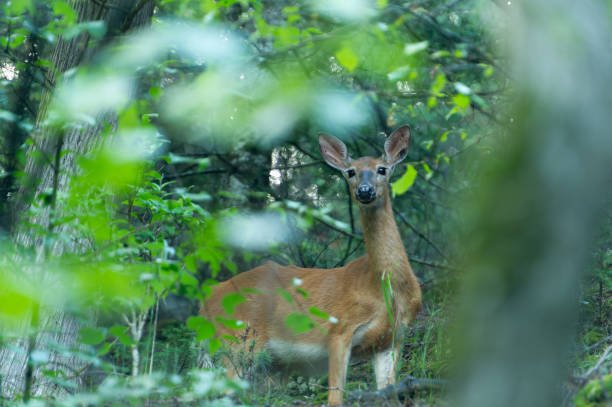The Alchemy of Jade Venison: A Culinary and Cultural Odyssey

In the heart of a mist-shrouded forest, where the air hums with the secrets of ancient trees, the idea of jade venison emerges like a whispered legend. Venison, the rich, primal meat of the deer, is a canvas of wilderness—its flavor as deep as the earth itself. Jade, the luminous stone revered across cultures for its verdant glow and spiritual weight, evokes purity, eternity, and transformation. To marry these two—venison and jade—is to embark on a culinary and cultural journey that transcends the plate, blending the raw vitality of nature with the refined elegance of human artistry. This 2,000-word exploration delves into the concept of jade venison, imagining it as both a dish and a metaphor, weaving together gastronomy, history, and symbolism.
The Essence of Venison: A Meat of the Wild
Venison, derived from the Latin venari (to hunt), is the meat of deer, elk, or other cervids. Unlike domesticated meats, venison carries the untamed spirit of the forest. Its lean, iron-rich flesh offers a flavor profile that is gamey yet delicate, robust yet fleeting. For centuries, venison has been a staple in diets across the globe, from the indigenous peoples of North America, who revered the deer as a sacred provider, to medieval European nobility, who prized it as a symbol of status. Today, venison is experiencing a renaissance, celebrated in fine dining for its sustainability and bold taste.
The deer itself is a creature of grace and paradox—both elusive and abundant, gentle yet resilient. In many cultures, it symbolizes peace, renewal, and connection to the natural world. To prepare venison is to honor this legacy, to transform the raw gift of the wild into something transcendent. But what happens when we infuse this primal ingredient with the ethereal qualities of jade?
Jade: The Stone of Heaven
Jade, known as yu in Chinese, is more than a gemstone; it is a cultural touchstone. For over 7,000 years, jade has been revered in China as the “Stone of Heaven,” embodying virtue, beauty, and immortality. Its cool, translucent surface, often shimmering in shades of green, white, or lavender, seems to hold the light of distant worlds. In Mesoamerican cultures, jade was equally sacred, associated with life, fertility, and the divine. The stone’s durability and luster made it a medium for everything from ceremonial axes to delicate carvings of gods.
In the context of food, jade evokes imagery of vibrant greens, delicate textures, and a sense of purity. A dish inspired by jade might incorporate verdant herbs, translucent elements like jellies or broths, or a presentation that mirrors the stone’s polished elegance. Jade venison, then, could be a culinary creation that marries the earthy depth of deer meat with the refined, almost mystical aesthetic of jade.
Imagining Jade Venison: The Dish
Let us envision jade venison as a signature dish, one that could grace the table of a Michelin-starred restaurant or a ceremonial feast. The concept is rooted in the interplay of textures, colors, and flavors, designed to evoke the stone’s luminous green and the deer’s woodland origins.
The Preparation
The centerpiece is a venison loin, sourced from a sustainably hunted deer, its meat dark and lean. To honor jade’s purity, the venison is marinated minimally—perhaps with juniper berries, which echo the forest, and a touch of wild thyme. The marinade includes a splash of green tea, infusing the meat with subtle, grassy notes that nod to jade’s verdant hue.
The cooking method is precise: the loin is seared briefly to lock in its juices, then roasted at a low temperature to medium-rare, preserving its tenderness and deep red core. The goal is a texture that is both yielding and substantial, like jade’s paradoxical softness and strength.
The Accompaniments
To evoke jade’s translucence, the dish is paired with a delicate consommé, made from venison bones and infused with matcha and lemongrass. The broth is crystal-clear, with a faint green tint, served in a shallow bowl that allows light to play through it, reminiscent of a polished jade slab. Floating in the consommé are thin slices of bamboo shoot and watercress, their crisp textures mirroring the stone’s clarity.
A second component is a vibrant herb puree, blending parsley, mint, and cilantro with a touch of yuzu zest. This emerald sauce, bright and tangy, is drizzled around the venison, its color a direct homage to jade. For contrast, a small mound of wild rice, flecked with edible flowers, adds earthy warmth and a nod to the forest floor.
The Presentation
The plate is a work of art, designed to evoke a Zen garden. The venison, sliced thinly, is arranged in a gentle arc, its rich burgundy contrasting with the green puree. The consommé is poured tableside, its steam rising like mist over a jade-carved landscape. A single sprig of microgreens, delicate as a deer’s antler, crowns the dish. The plate itself might be crafted from ceramic with a jade-like glaze, cool to the touch and luminous under soft lighting.
The Flavor
The first bite of jade venison is a revelation. The venison is succulent, its gamey depth tempered by the herbal marinade. The consommé offers a cleansing, aromatic warmth, while the herb puree bursts with freshness, cutting through the meat’s richness. Each element is distinct yet harmonious, like notes in a symphony. The dish feels both primal and refined, grounding the diner in the earth while lifting them toward the ethereal.
Cultural Resonance: Jade and Venison in Context
Beyond the plate, jade venison carries profound cultural weight. In Chinese tradition, jade is associated with the five virtues: benevolence, righteousness, propriety, wisdom, and fidelity. A dish inspired by jade might be served at a banquet to symbolize harmony and honor, perhaps during a festival like the Mid-Autumn Moon Festival, where unity and gratitude are celebrated. The venison, as a product of the hunt, connects to ancient rituals of offering and respect for nature’s bounty.
In indigenous North American cultures, the deer is a totem of gentleness and survival. A jade-inspired venison dish could be a modern tribute to these traditions, incorporating native ingredients like sumac or chokecherry to bridge the old and new. The green aesthetic might also evoke the lush forests of the Pacific Northwest, where deer roam and jade-like hues dominate the landscape.
In a global context, jade venison could symbolize the fusion of East and West. The stone’s universal appeal—cherished in China, Mesoamerica, and beyond—pairs with venison’s global presence, from Scottish highlands to New Zealand’s plains. The dish becomes a dialogue, a way to explore shared human values through food.
The Symbolism of Jade Venison
As a metaphor, jade venison speaks to transformation. The deer, a creature of the wild, is elevated through human craft into something sublime, just as raw jade is carved into objects of eternal beauty. The dish embodies balance: the earthiness of meat and the lightness of herbs, the warmth of the roast and the coolness of the stone’s imagery. It is a reminder that food is not just sustenance but a medium for storytelling, a way to connect with history, nature, and one another.
In a world increasingly disconnected from the sources of our food, jade venison invites mindfulness. It asks the diner to consider the deer’s journey, the hands that shaped the dish, and the cultures that imbue it with meaning. Like jade, which grows more luminous with time, the experience of this dish lingers, its flavors and symbolism deepening in memory.
The Modern Context: Sustainability and Innovation
Today, venison is a darling of sustainable cuisine. Deer populations in many regions are abundant, and hunting or culling is often necessary to maintain ecological balance. Unlike factory-farmed meats, venison has a low environmental footprint, making it a choice that aligns with the ethos of jade’s purity. Chefs like René Redzepi of Noma have championed wild ingredients, and jade venison could find a home in such avant-garde kitchens, where nature and innovation collide.
The dish also lends itself to modern techniques. Molecular gastronomy could enhance the jade aesthetic—imagine a venison tartare encased in a translucent herb gel, or a foam of matcha crowning the loin. Yet the dish’s soul remains rooted in simplicity, ensuring that the venison’s wild essence is never overshadowed.
Conclusion: The Legacy of Jade Venison
Jade venison is more than a dish; it is an invitation to see food as art, culture, and connection. It bridges the primal and the divine, the forest and the table, the past and the present. Whether savored in a bustling city restaurant or a quiet woodland cabin, it carries the weight of stories—of hunters, artisans, and dreamers who saw beauty in the raw materials of the earth.
As we bite into the tender venison, sip the fragrant consommé, and marvel at the emerald hues, we are reminded of jade’s enduring lesson: that true beauty lies in balance, in the alchemy of the ordinary and the extraordinary. In a world hungry for meaning, jade venison offers nourishment for both body and soul.



